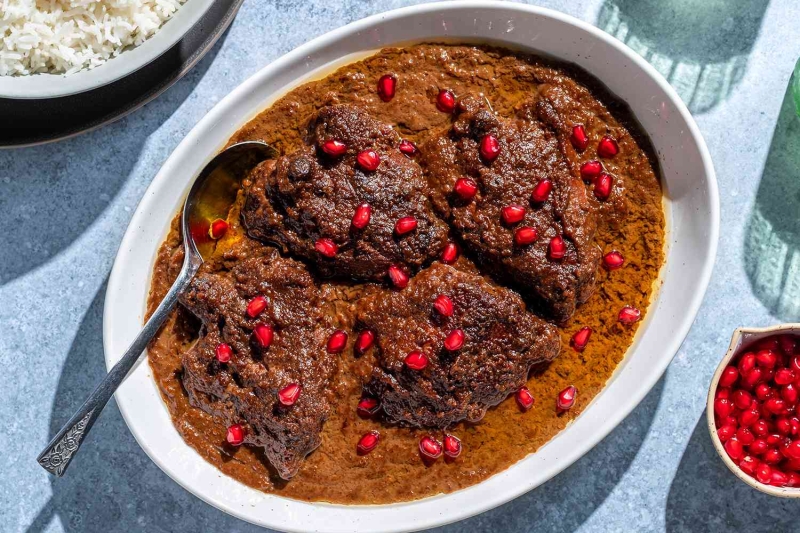Prep: 20 mins
Cook: 2 hrs
Total: 2 hrs 20 mins
Servings: 4 servings
Fesenjan, or fesenjoon, is one of the most famous signature dishes of Iran. It is a khoresh, a Farsi term for stews and braises, which in turn are cornerstones of Persian cuisine. An inherently simple dish, fesenjan is a perfect blend of flavorful ingredients that deliver a soulful and scrumptious dish that is rich, earthy, and tart, with a hint of sweetness.
What Ingredients Are In Fesenjan?
Fesenjan’s roots are in northern Iran by the Caspian Sea, where pomegranates are abundant and are used in many dishes, whether fresh and whole, juiced, or concentrated to form a paste. Walnuts, the second most important nut crop in Iran after pistachios, combine with pomegranates to make this dish a celebration of natural resources.
A Winter Solstice Favorite
While Fesenjan can be made for any occasion, it is particularly cherished at the Winter Solstice, Shab-e Yalda in Farsi. Fresh pomegranates are at the front and center of Winter Solstice tables.
How To Serve Fesenjan
As always with Persian food, there are regional variations that offer textures ranging from smooth to more coarse, and flavors varying from tart to sweet. Fesenjan is frequently served with Persian steamed basmati rice, a medley of flatbreads, or side dishes such as a platter of fresh herbs.
“If you would like to try more Persian recipes, I absolutely suggest fesenjan. It’s warm, cozy, and made with few but flavorful ingredients. If you prefer the stew to be more tangy like I do, go for a pomegranate molasses brand that’s not sweet. You can then adjust the tanginess by adding sugar.” —Bahareh Niati
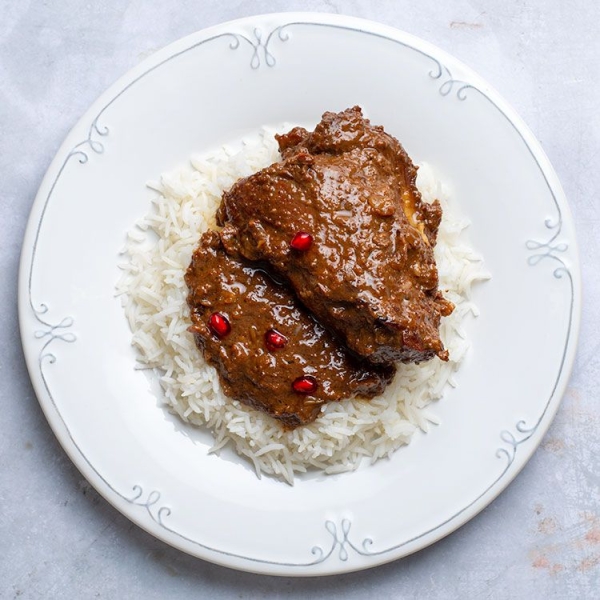
A Note From Our Recipe Tester
Ingredients
-
3 tablespoons olive oil, divided
-
4 large bone-in skin-on chicken thighs
-
1/2 cup water
-
1 large onion, diced
-
2 cups walnut halves
-
1 cup store-bought or homemade pomegranate molasses, divided
-
1/2 teaspoon fine salt
-
1/4 teaspoon freshly ground black pepper, more to taste
-
1 to 2 tablespoons sugar, optional
-
1/2 cup pomegranate seeds, for garnish, optional
Steps to Make It
-
Gather the ingredients.
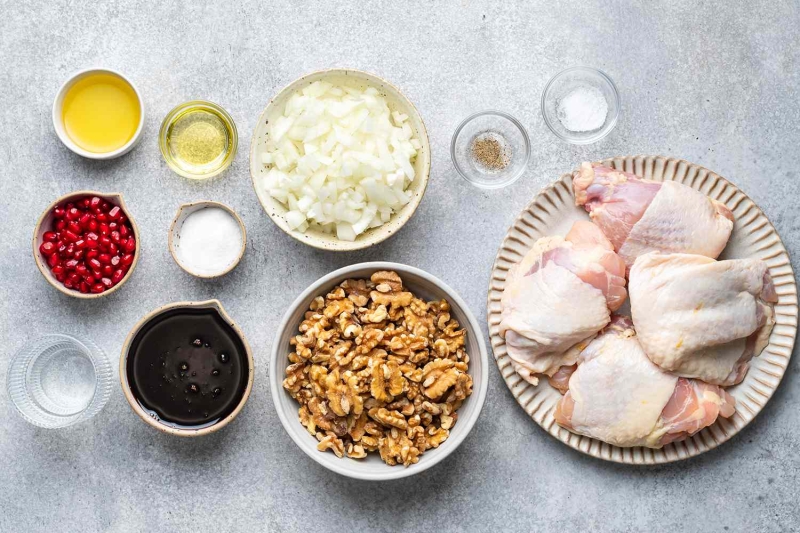
-
In a large Dutch oven or other heavy-duty pot, heat 1 tablespoon of the oil on medium-high heat until it shimmers. Add the chicken, skin side down, and cook undisturbed until lightly brown, flipping halfway through cooking time, about 8 minutes total.
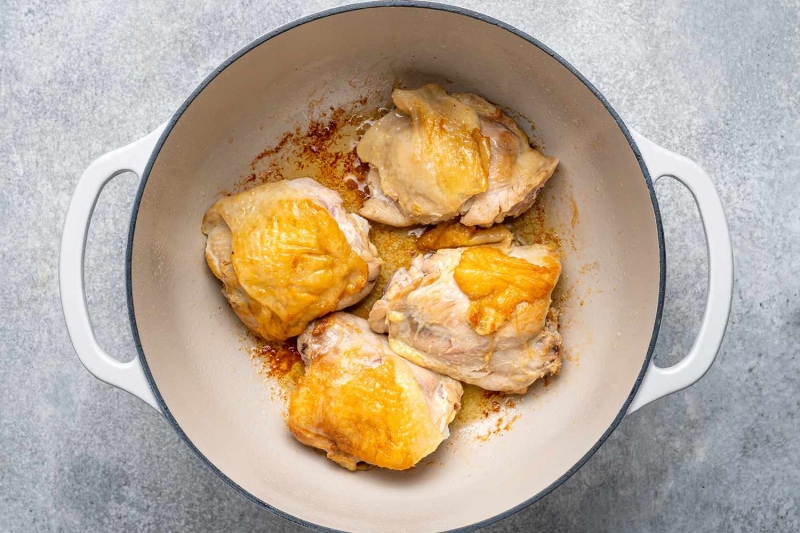
-
Add the water, cover, reduce heat to low, and simmer for 30 minutes.

-
Meanwhile, in a large skillet, heat the remaining 2 tablespoons oil on medium-high heat until it shimmers. Add the onion and cook, stirring occasionally, until light golden, about 5 minutes.
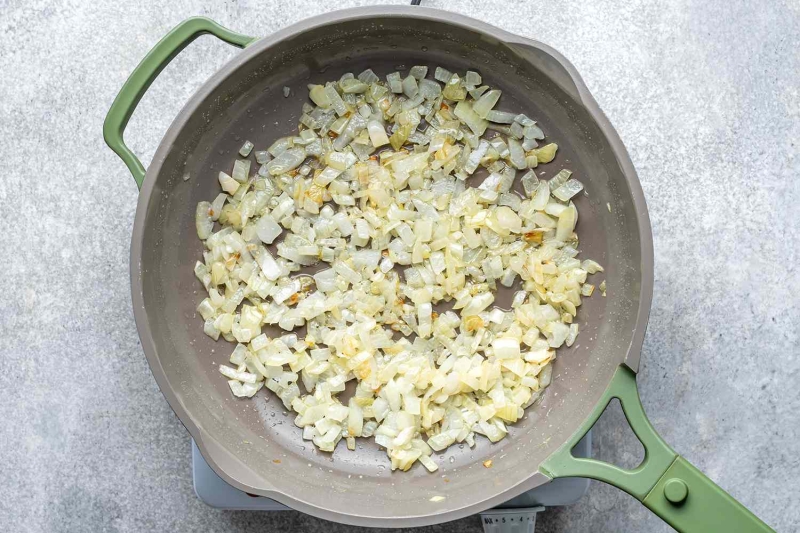
-
Place the walnuts in a food processor and pulse until finely ground, scraping down the sides of the bowl often.

-
Add the ground walnuts to the onion. Cook over over medium heat until just fragrant, about 2 minutes. Do not overcook as the walnuts will become bitter.
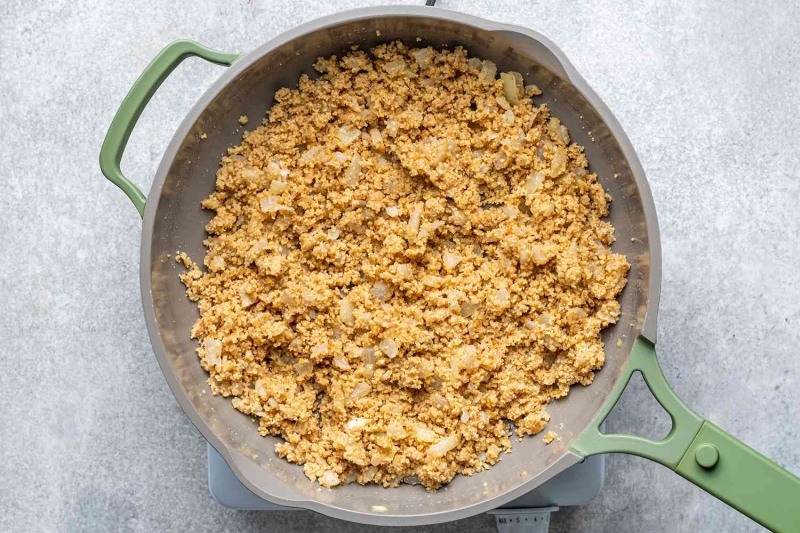
-
Add the onion and walnut mixture, 3/4 cup of the pomegranate molasses, salt, and pepper to the chicken. Stir to combine.
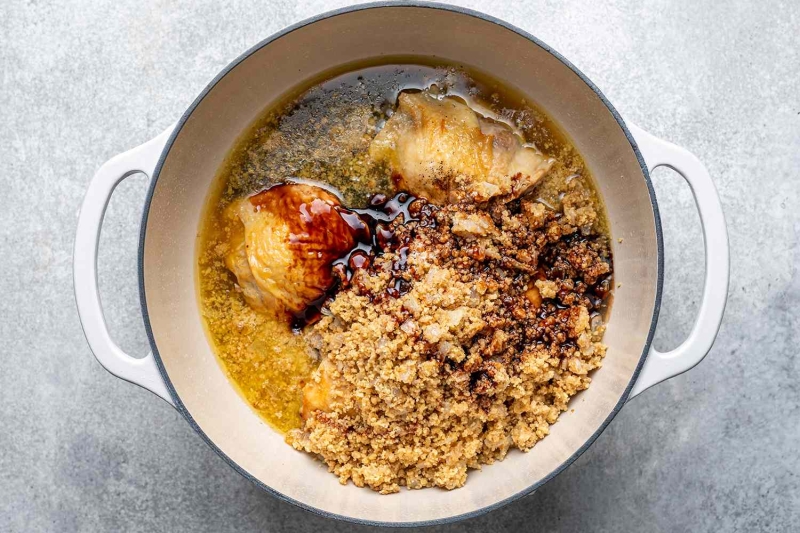
-
Reduce the heat to low and cover the pot. Simmer, gently stirring every 15 minutes so the sauce does not burn on the bottom of the pot. The stew should turn a deep brown, and the chicken should be fork-tender, about 1 hour and 15 minutes (if the chicken is cooked but the stew is not deep brown, remove the chicken pieces to a plate and continue cooking the stew).
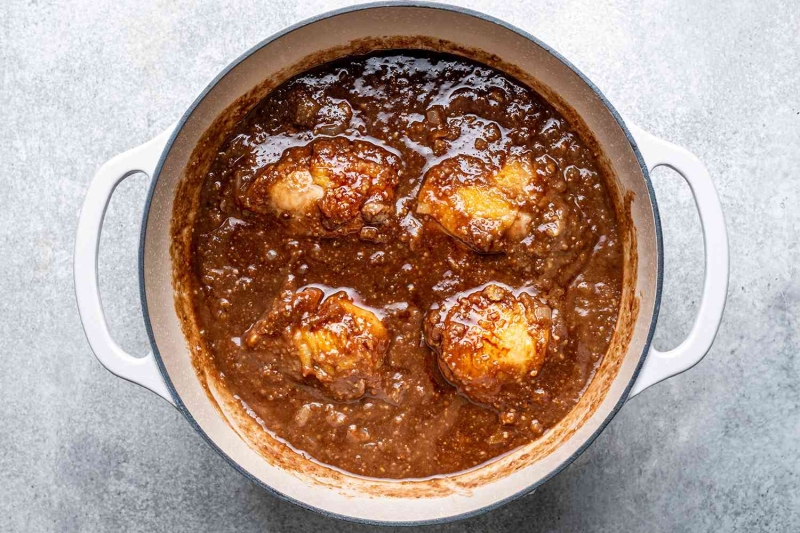
-
Adjust to taste by adding the remaining 1/4 cup pomegranate molasses, salt, pepper, and sugar, if desired.
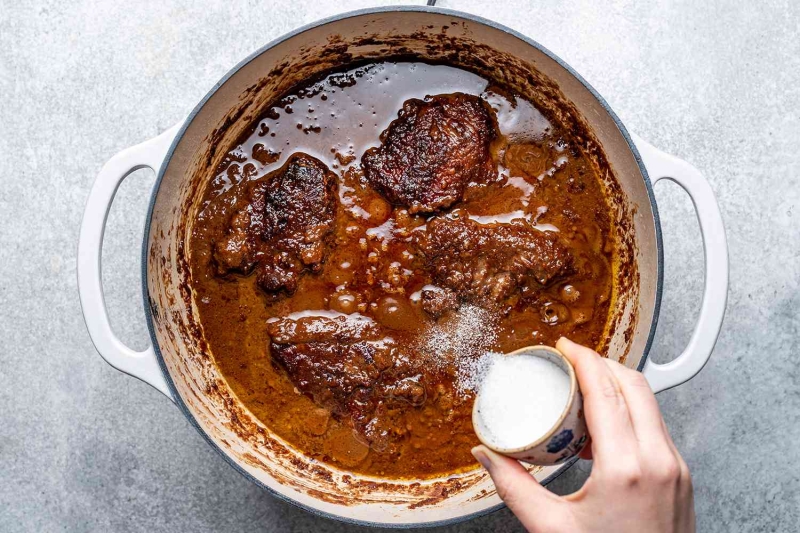
-
Remove from the heat and let sit for 5 minutes. As the stew settles down, a thin layer of oil from the walnuts will surface, showcasing the signature richness of this dish.
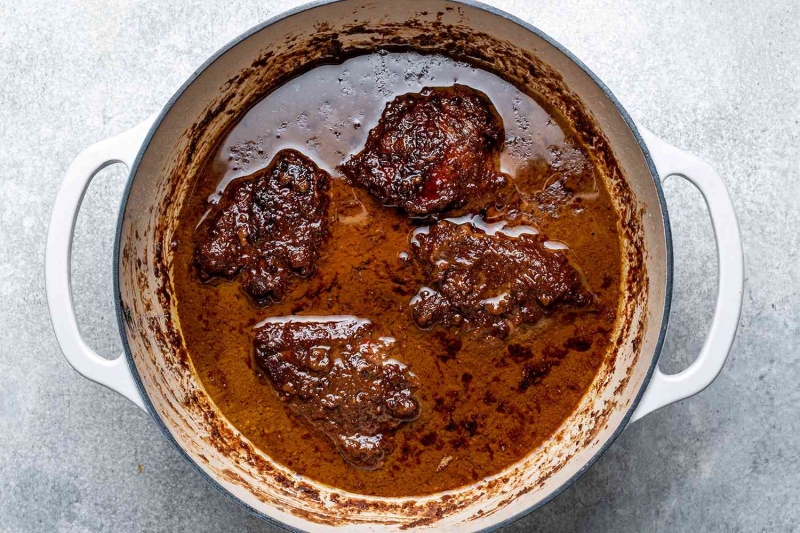
-
Transfer the stew to a serving bowl and garnish with pomegranate seeds, if using. Serve with Persian steamed basmati rice.

Recipe Tips
- Fesenjan takes nearly 2 hours to cook, so give yourself plenty of time, or make ahead.
- For consistency, and to maintain control over ingredients, my preference is to use homemade pomegranate molasses. Commercially produced molasses, paste, or concentrates can be used, but they vary significantly in flavor, consistency, and sweetness, so be sure to check the sugar content in particular, and adjust the amount as necessary to achieve a tart and only slightly sweet flavor. Sadaf, a Persian brand, offers a well-balanced flavor profile for fesenjan.
- A heat diffuser (or “flame tamer”) under the pan can help to ensure that the fesenjan cooks evenly without burning.
Make Ahead
- Fesenjan can be made up to 3 days ahead, and the flavors will continue to deepen.
- Make pomegranate molasses ahead of time and store in the refrigerator.
Recipe Variations
- Duck is a great, traditional alternative to chicken in fesenjan. Increase the initial cooking time from 30 minutes to 60 minutes.
- Simple beef or lamb meatballs without cheese are also traditional alternatives to chicken.
- For a vegetarian alternative, replace the chicken with big chunks of lightly sauteed butternut squash and reduce the cooking time to 75 minutes total.
How To Store
- Store leftover stew in an airtight container in the refrigerator for up to 3 days, or in the freezer for up to 1 month.
- To defrost, remove the container from the freezer the night before and allow the food to defrost in the refrigerator.
- To reheat, place the stew in a covered skillet over medium-low heat, adding a small amount of water as necessary, until heated through.
| Nutrition Facts | |
|---|---|
| Servings: 4 | |
| Amount per serving | |
| Calories | 1024 |
| % Daily Value* | |
| Total Fat 67g | 86% |
| Saturated Fat 12g | 58% |
| Cholesterol 208mg | 69% |
| Sodium 574mg | 25% |
| Total Carbohydrate 69g | 25% |
| Dietary Fiber 4g | 15% |
| Total Sugars 59g | |
| Protein 47g | |
| Vitamin C 3mg | 16% |
| Calcium 106mg | 8% |
| Iron 4mg | 20% |
| Potassium 1235mg | 26% |
| *The % Daily Value (DV) tells you how much a nutrient in a food serving contributes to a daily diet. 2,000 calories a day is used for general nutrition advice. | |
